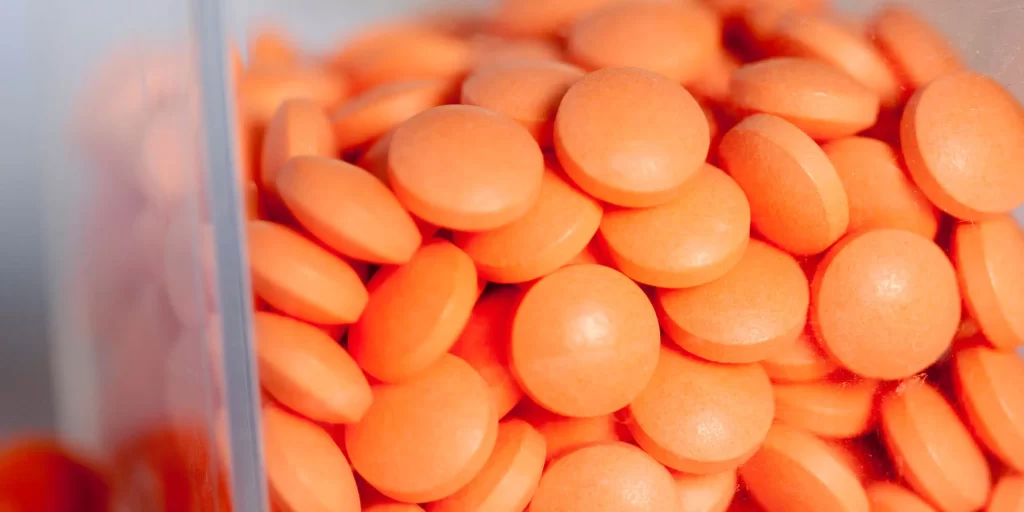How Long Does Suboxone Stay In Your System?
Written by Theresa Valenzky
& Medically Reviewed by Dr. Jessica Pyhtila, PharmD
Medically Reviewed
Up to Date
Last Updated - 6/17/2022
View our editorial policy
Suboxone is a medication used for treating opioid use disorder, which is commonly used as maintenance therapy. It can help a person with opioid dependence by reducing their cravings. Suboxone is a combination of two medications — buprenorphine and naloxone — that comes as a tablet or film that dissolves under the tongue. How long Suboxone stays in your system depends on several different factors, including frequency of use, age and overall health.
What Is Suboxone?
Suboxone is the brand name for the combination drug buprenorphine/naloxone. The drug is a major part of medication-assisted treatment (MAT) for opioid use disorder and is an alternative to methadone.
Suboxone is a Schedule III controlled substance and is an opioid. However, it is lower risk than illicit opioids and is prescribed to blunt cravings, prevent withdrawal symptoms and prevent an overdose. Buprenorphine binds to opioid receptors, and naloxone inhibits the euphoria response. Combining the two drugs prevents withdrawal symptoms but does not produce a high like prescription opioids.
What Does Suboxone Look Like?
Suboxone comes as an oral film that is placed under the tongue. It is available in foil packages, looks like an orange film and has a lime taste.
Importantly, Suboxone itself only comes as a sublingual film. Other buprenorphine products are available in different dosage forms but sold under other brand names. Sometimes people will call these products Suboxone, but they are not. For example, people may talk about an orange Suboxone pill, but this does not exist — the orange pill dosage form of buprenorphine is sold under the brand name Zubsolv, not Suboxone.
How Long Does It Take for Suboxone to Kick In?
Suboxone dissolves under the tongue quickly and starts working within minutes. The initial effects occur rapidly within 30–60 minutes of taking Suboxone, and the peak effect is reached about 100 minutes after taking the dose.
How Long Does Suboxone Last?
The duration of Suboxone’s effects depends on the amount used. Dosing is determined by the minimal amount of drug that relieves the person’s withdrawal symptoms. No matter the dose, Suboxone is dissolved under the tongue once daily, making the Suboxone duration approximately 24 hours.
Suboxone Side Effects
Suboxone, like all drugs, carries the risk of side effects. As a controlled substance, one risk with Suboxone is the risk of abuse, addiction and dependence. However, other side effects are also possible and include:
- Headache
- Mouth pain
- Withdrawal symptoms
- Nausea or vomiting
- Constipation
- Insomnia
- Sweating
How Is Suboxone Metabolized in the Body?
Suboxone is mainly metabolized or broken down in the body by the liver enzyme CYP3A4. Another chemical process called glucuronidation can also break down Suboxone and its metabolite norbuprenorphine.
Suboxone Half-life
A drug’s half-life refers to how long it takes your body to eliminate half of a dose. Sometimes, a drug’s half-life is consistent with how often the drug’s effects last in your body. This is similar to Suboxone, which has a 24–42 hour half-life for the buprenorphine component and a 2–12 hour half-life for the naloxone component. It typically takes around five half-lives to eliminate a drug from your body completely.
Does Suboxone Show Up on a Drug Test?
Suboxone shows up on drug tests. Courts, employers and doctors may order a drug test for many reasons. While employers and courts may want drug tests to prove you do not take substances, doctors may order them to screen you for substances or help verify you are taking a medication like Suboxone as prescribed.
How Long Does Suboxone Stay In Your System?
How long a Suboxone strip stays in your system depends on what is being tested. After taking Suboxone, the medication may be detected in a person’s system for different amounts of time. The general detection times are as follows:
How Long Does Suboxone Stay In Your Urine?
How long a Suboxone strip stays in your urine can differ. While buprenorphine can stay in your system for up to seven days, its breakdown products norbuprenorphine and glucuronides can remain in urine for up to 14 days.
How Long Does Suboxone Stay In Your Blood?
The drug buprenorphine can be found in blood up to 42 hours after the last dose. However, the drug’s breakdown products norbuprenorphine and glucuronides can remain in the blood for up to 150 hours.
How Long Does Suboxone Stay In Your Hair?
A 1.5-inch hair sample can detect Suboxone use within the past 90 days.
How Long Does Suboxone Stay In Your Saliva?
Suboxone can be found in saliva for up to two days after the last use.
Factors Affecting How Long Suboxone Stays in Your System
How long Suboxone remains in your system depends on several different factors. Suboxone stays in your system until it is fully metabolized and no longer stored anywhere in the body. The rate this occurs differs from person to person based on:
- Frequency & Amount of Use: The dosing of Suboxone is determined individually. The physician will gradually increase the amount until the individual has relief from their symptoms. This can range from 4 mg buprenorphine/1 mg naloxone to 24 mg buprenorphine/6 mg naloxone daily. Increasing the frequency and amount of the drug used may impact the detection time. For example, how long 2 mg of Suboxone stays in your system may be shorter than 4 mg.
- Age & Health: How long Suboxone stays in your system can depend on your age and weight. Drug metabolism tends to decrease as people age. This means drugs will stick around longer in older people. Suboxone metabolism also changes with a person’s health. People with liver impairments will metabolize the drug more slowly.
- Weight & Body Fat Content: How long it takes for Suboxone to leave a person’s system depends on their weight. People weighing more tend to metabolize drugs faster.
- Method of Use: Suboxone is prescribed as a tablet or strip that dissolves under the tongue. How long the Suboxone strip stays in your system depends on the strip’s dose. Some people may refer to the tablet as a pill. However, it should not be taken like a normal pill. How long a Suboxone tablet or pill stays in your system depends on the person allowing it to dissolve under their tongue fully. If swallowed, not as much of the drug will be absorbed, and it will be less effective.
False Positive for Suboxone
A false positive drug test occurs when the result shows the presence of a drug in a person’s system despite them not consuming the drug. Suboxone is an opioid-like drug. However, traditional opioid drug tests do not detect it. Opioid drug tests are usually designed to detect morphine or codeine, as most opioids will be metabolized into the morphine compound. When the buprenorphine in Suboxone is metabolized, it forms norbuprenorphine, not morphine. Therefore, a false positive for Suboxone is unlikely.
A specific test for norbuprenorphine is needed to detect Suboxone use. Regardless, informing the tester is a good idea to avoid a false positive Suboxone result if you take Suboxone.
How to Get Suboxone Out of Your System
How long it takes Suboxone to leave your system depends entirely on the function of the CYP3A4 enzyme in your liver. Some medications, like St. John’s Wort and rifampin, make the enzyme work more quickly than normal, while others, like ciprofloxacin (Cipro) and fluconazole (Diflucan), slow down the enzyme’s activity.
Suboxone Addiction Treatment in Ridgefield, WA
Suboxone is an addictive substance that can be dangerous if misused. If you or a loved one are affected by an opioid use disorder, The Recovery Village Ridgefield can help. From our inpatient medical detox programs to our inpatient and outpatient rehab options, we offer a continuum of care to stay with you every step of the way as you stop Suboxone. Call us today to speak with a representative to learn more about our comprehensive treatment plans.
Sources
Gryczynski, Jan; Schwartz, Robert P; Mitchell, Shannon D; et al. “Hair Drug Testing Results and Self-reported Drug Use among Primary Care Patients with Moderate-risk Illicit Drug Use.” Drug and Alcohol Dependence, May 17, 2014. Accessed August 21, 2022. ARUP Laboratories. “Drug Plasma Half-Life and Urine Detection Window.” October 2021. Accessed August 21, 2022. Cansford Laboratories. “Oral Fluid (Saliva) Testing.” Accessed August 21, 2022. Kinirons, M.T.; O’Mahony, M.S. “Drug metabolism and ageing.” British Journal of Clinical Pharmacology, May 2004. Accessed August 21, 2022. Drugs.com. “Suboxone.” May 23, 2022. Accessed August 21, 2022. Barras, Michael. “Drug dosing in obese adults.” Australian Prescriber, October 3, 2017. Accessed August 21, 2022. Reisfield, Gary M.; Salazar, Elaine; Bertholf, Roger L. “Rational Use and Interpretation of Urine Drug Testing in Chronic Opioid Therapy.” Annals of Clinical & Laboratory Science, 2007. Accessed August 21, 2022. Hallare, Jericho; Gerriets, Valerie. “Half Life.” StatPearls, June 23, 2022. Accessed August 21, 2022.
View Sources
Gryczynski, Jan; Schwartz, Robert P; Mitchell, Shannon D; et al. “Hair Drug Testing Results and Self-reported Drug Use among Primary Care Patients with Moderate-risk Illicit Drug Use.” Drug and Alcohol Dependence, May 17, 2014. Accessed August 21, 2022. ARUP Laboratories. “Drug Plasma Half-Life and Urine Detection Window.” October 2021. Accessed August 21, 2022. Cansford Laboratories. “Oral Fluid (Saliva) Testing.” Accessed August 21, 2022. Kinirons, M.T.; O’Mahony, M.S. “Drug metabolism and ageing.” British Journal of Clinical Pharmacology, May 2004. Accessed August 21, 2022. Drugs.com. “Suboxone.” May 23, 2022. Accessed August 21, 2022. Barras, Michael. “Drug dosing in obese adults.” Australian Prescriber, October 3, 2017. Accessed August 21, 2022. Reisfield, Gary M.; Salazar, Elaine; Bertholf, Roger L. “Rational Use and Interpretation of Urine Drug Testing in Chronic Opioid Therapy.” Annals of Clinical & Laboratory Science, 2007. Accessed August 21, 2022. Hallare, Jericho; Gerriets, Valerie. “Half Life.” StatPearls, June 23, 2022. Accessed August 21, 2022.
Authorship






